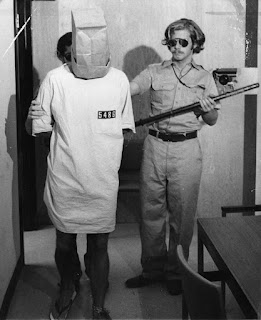The Stanford Prison Experiment
The Stanford Prison Experiment
The Stanford Prison Experiment commenced on Aug. 14, 1971, after university psychology professor Philip Zimbardo divided student volunteers into two groups comprised of 11 guards and 10 prisoners in order to see how they would behave on their own inside a fabricated "prison."
The goal was to assess how quickly and intensely even educated and intelligent people can turn cruel and sadistic under the right conditions and find out once and for all whether humans are inherently good or evil.
In just six days, before the experiment had to be called off, the "guards" had repeatedly abused and humiliated the "prisoners" by spraying them with fire extinguishers and forcing them to clean toilet bowls with their bare hands. The study and the creepiest photos left behind provide a chilling look at what humans are capable of.
The Stanford prison experiment (SPE) was a psychological experiment conducted in the summer of 1971. It was a two-week simulation of a prison environment that examined the effects of situational variables on participants' reactions and behaviors. Stanford University psychology professor Philip Zimbardo led the research team who administered the study
Participants were recruited from the local community with an ad in the newspapers offering $15 per day to male students who wanted to participate in a "psychological study of prison life." Volunteers were chosen after assessments of psychological stability, and then randomly assigned to being prisoners or prison guards. Critics have questioned the validity of these methods.
Those volunteers selected to be "guards" were given uniforms specifically to de-individuate them, and instructed to prevent prisoners from escaping. The experiment officially started when "prisoners" were arrested by real Palo Alto police. Over the following five days, psychological abuse of the prisoners by the "guards" became increasingly brutal. After psychologist Christina Maslach visited to evaluate the conditions, she was upset to see how study participants were behaving and she confronted Zimbardo. He ended the experiment on the sixth day
SPE has been referenced and critiqued as one of the most unethical psychology experiments in history. The harm inflicted on the participants prompted universities worldwide to improve their ethics requirements for human subjects of experiments to prevent them from being similarly harmed. Other researchers have found it difficult to reproduce the study, especially given those constraints. Critics have described the study as unscientific and fraudulent




Comments
Post a Comment